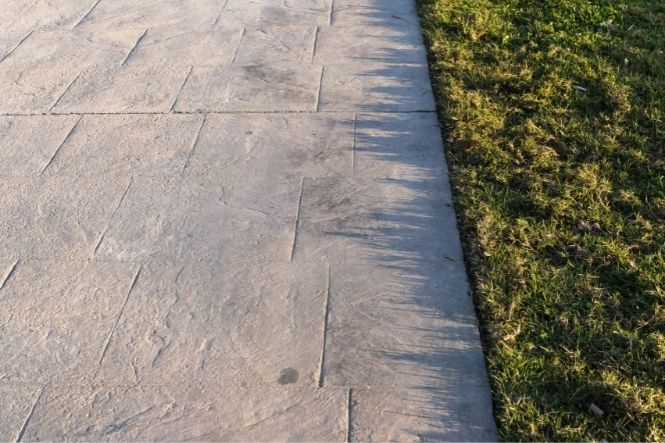Expansion joints protect the structure of a drive from cracks caused by concrete expanding and contracting in hot or cold weather. Severe seasonal changes can crack even the strongest concrete, no matter how carefully it is laid. Expansion joints are placed in all large slabs to allow for this expansion and never should they be crossed by vehicles as doing so can lead to the above cracks in your concrete
A lot of people reading this will be thinking, “What, joints in concrete? Doesn’t concrete just get poured out?” They’ll be right, to an extent, but if you remember any really large, flat Concrete Surface you’ve seen, there will have been black lines across it every so often. Yes, those lines mark where the expansion joints are.
Table of Contents
The Need For Expansion Joints
Concrete sets very hard, more so than many other popular drive surfaces. But like most materials it also expands and contracts as it heats up and cools down. Combine that strength with this expansion and it’s easy to see why Concrete Cracks, and why you need to put in an expansion joint in a large slab.
There’s aren’t that many driveways that will need expansion joints. A slab can be about 20ft square (6m square) before it will need an expansion joint, but it’s not only size that matters. As well as preventing the slab from simply pulling itself apart, expansion joints protect fittings, like drain access covers and adjacent walls, from being broken by the forces that the slab exerts as it expands and contracts. They also protect against frost, if your area is prone to that.
Components Of An Expansion Joint
Expansion joints are gaps between sections of poured concrete filled with a material that allows movement in the gap (more on this later). The top edges of the two slabs will often be chamfered to prevent them from cracking (spalling) and one or both sides will have a recess for the top inch or two.
The recess enables the concrete to be poured up to this point, and then it can either be left flat if another slab will go on top of it or chamfered again so that access covers can be fitted. It just needs one expansion joint in a large concrete surface like a garage floor or driveway but extra joints may also need to be put in to be extra safe near walls or for other reasons.
This recess is filled with a flexible sealant to prevent debris and water getting into the gap. It’s this flexible cover that gives rise to the black lines, as traditionally this would have been bitumen. These days bitumen isn’t used so much and it’s more common to employ a resin-based compound that’s applied cold with a curing agent mixed in.
Filling The Gap
On a very large concrete surface dowelled joints are used. The steel dowels are inserted into one side of the joint with recesses in the opposing face. As the concrete expands and contracts the dowels slide in and out. The gap between the slabs will also be filled with a flexible material, often a board made of fibre.
It might seem odd filling a gap that’s meant to allow movement, but the movement is small and slow. The board can cope with it as long as it is the right width for the gap, usually between 0.5-1.5in (about 1.5-4cm). The board prevents too much dirt and water getting into the gap which it inevitably would, even with the sealant at the top.
Problems you might face
A joint that’s become waterlogged. How to prevent this: make sure your fillers are the right size for the gap, at least 1-2 inches (about 2.5-5cm) wide to give them some room to let moisture out and be sealed off from both sides, use a good quality resin with an additive for water resistance, and if necessary use a membrane such as geogrid between the two slabs.
(Note: some areas are prone to frost heave; when an area containing water freezes, it expands and pushes up from underneath, like a bulge in thick concrete).
A joint that’s cracked or broken. This may not be a problem as such, but it could lead to further problems. How to prevent this cracking: ensure the bottom of the joint is thoroughly sealed (again membrane can help) and perhaps use a grouting type sealant rather than a standard concrete filler.
Get Expert Help For Your Drive
If this all sounds a bit complex, then that’s because it is. Creating the right gap widths and filling them with the correct material is not really a job for the amateur. It’s far better to get a contractor who can demonstrate that they have previously put expansion joints into a concrete drive.
If you are intent on laying a large or long concrete driveway yourself, you really should consult a structural engineer with the relevant experience before starting the project.
Conclusion
In conclusion, the best advice is to follow the instructions in this article and then get a contractor with experience of expansion joints in concrete drives. To leave the expansion joints out is to risk a concrete driveway that will crack and your drains getting blocked when it freezes.


